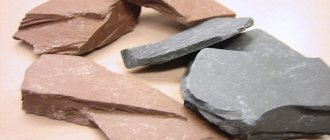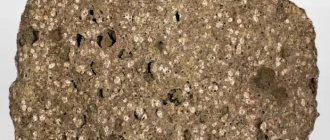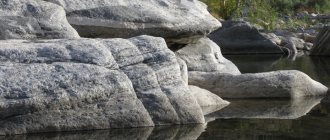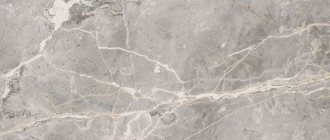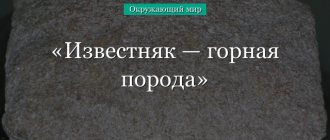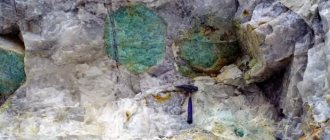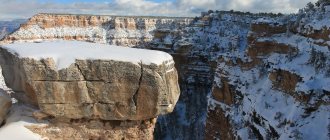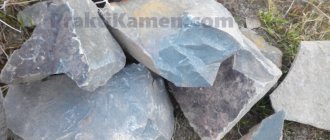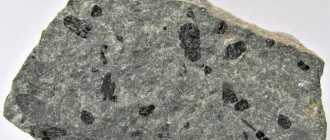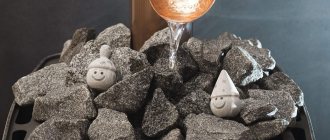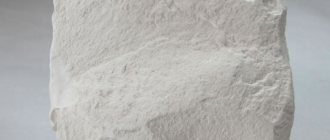Physical properties of gabbro
The color is dark, dark green, black. The structure is coarse-grained, medium-grained. The texture is mottled, banded or massive. Specific gravity 2.76-3.27 g/cm3. Hardness 6-7 on the Mohs scale. The melting point reaches 1250ºС. The compressive strength is on average 280 MPa.
Features . Gabbro is characterized by a granular structure, containing mainly feldspar and pyroxene, the absence of quartz, dark color, and high density. The stone can be confused with diorite. The difference is that it is heavier than diorite, contains more dark-colored minerals and has a darker color.
Scope of application
Immunity to acids, temperature changes, resistance to water and high strength have provided the gabbro-diabase material with a wide range of applications in the following areas:
- The stone is used as a block road surface (mosaic block, paving stones, curbs). One of the leading attractions of the capital, Red Square, is paved with paving stones of Karelian origin.
- In addition to paved roads, gabbro is used as a base stone, for the production of crushed stone and rubble.
- The durability of gabbro-diabase has been successfully used in architecture. The most striking example of preserving the pristine structure is the soulfully majestic Vorontsov Palace on the Crimean Peninsula, built from diabase stone.
- Gabbro belongs to the 2nd class of decorativeness. The contrasting combination of a polished surface of rich black color and a gray tint on cuts and chips is especially highly valued. Due to this property of natural stone, an expressive artistic effect is achieved, used in engravings, when creating sculptures and ornaments.
- The resistance to external factors of gabbro-diabase, a polished surface with a rich black color that attracts the eye, ensure a frequent choice of natural stone in the production of tombstones.
- Precision engineering is another area of application for high-strength stone.
- When equipping a bathhouse or sauna, choosing gabbro diabase stone is a popular solution. One option is to use crushed material with a ribbed surface in the oven. This allows maximum heat accumulation; the stones do not crack during frequent contact with cold water and can withstand high temperatures perfectly. In addition to stoves, gabbro stones in the form of facing slabs provide decorative finishing to the room, while simultaneously promoting long-term heat retention.
The use of natural gabbro-diabase stone goes beyond construction and architecture. Environmentally friendly material has a beneficial effect on the functioning of the human body. Its ability to stabilize the nervous system, the genitourinary system and the liver is used in folk medicine. Astrologers recommend wearing gabbro diabase as an amulet to increase physical activity. The main thing is to be confident in the positive effect of the stone on the body.
What is porphyry or porphyry
A porphyry mineral is an opaque rock of volcanic origin. The color palette is rich: red, yellow, green, brown, gray, inky colors of many shades or combinations thereof. It is similar to granite (in some varieties it appears indistinguishable). However, porphyry is easy to distinguish: it is stronger, lighter and never crumbles.
Origin of the stone
We understand that there was some confusion about what was called "porphyrite".
This included paleotype (changed) effusive (outpoured) rocks (for example, there was basalt, it was covered with sedimentary rocks, under these layers it changed and turned into basaltic porphyrite), and cenotype (unchanged) igneous intrusive hypabyssal (= magma filled the cracks and cavities at a depth of up to 2 km and there it froze immediately in the form of porphyrite).
Porphyrite deposits. Photo by Porfirit LLC
From this it can be seen that the origin of porphyrite depends on what is called by this term in modern petrography . It seems that now only the cenotypic intrusive hypabyssal ones are left. Whereas paleotype rocks received the prefix “paleo-” to their name. But more on that later.
The name “porphyrite” itself suggests that the so-named stone has a porphyry structure. This point is worth clarifying. The porphyry structure can be found in different origins . It can vary in size - from obvious to the naked eye to visible only under high magnification. In this case, in any case, large crystals of some minerals will be observed surrounded by either an amorphous mass of glass or minerals that have replaced it (the latter is the result of changes in paleotype rocks).
Let's take the case of glass. How is it that part of the melt crystallized, and part froze in the form of glass? Crystallization depends on compliance with temperature and pressure conditions. The first phase had time to crystallize while still in the melt, but the second phase lacked something before crystallization—maybe the temperature dropped too quickly.
This can also happen during the movement of magma. It can cool down slowly in the depths, which will give rise to the growth of crystals under favorable conditions , and then something will displace it upward, where the temperature is lower, and the formed crystals will remain, and the remaining melt will become glass.
Another reason is the loss of the fluid part, that is, gases and vapors of liquids evaporate as the magma rises, it becomes more viscous, less mobile, and it is more difficult for crystals to form in it.
It is curious that the order of occurrence is clearly visible in the porphyry structure: the crystals come first, and the glass comes second. But if the entire melt crystallized, then we would try to give priority to the most formed crystals, that is, euhedral ones. Because the others seem to obey them, filling the remaining space. In fact, some minerals are better euhedral, even if they are not the first to crystallize.
Form of occurrence
Again, there is a difference between paleotype and cenotype porphyrites. The former, being effusive, occur in streams, domes, and covers . The latter break through cracks and cavities, sometimes tearing apart the host rocks. From this, dikes, stocks and sills are formed.
Photo Potential-Nedra
If the deposit is close to the surface and its quantity makes industrial development profitable, the deposit is developed. On this page we talk about the most famous porphyrite deposits, giving their contact information along the way.
Varieties and places of production
Gabbro-diabase varies by type depending on its composition, origin and properties.
According to its composition, the stone can be divided into several groups:
- ordinary or olivine-free;
- dolerites or olivines;
- quartz.
Among these groups, the following types of stones are distinguished:
- saussurite;
- leucophyre;
- mica;
- low-colite.
Gabbro-diabase is mined on all continents, but the deposits are uneven in volume and quality of the mineral. The thickness of the lenses and rock layers varies from tens to several hundred meters.
The value of the mined stone also varies:
Karelian black gabbro-diabase is valued higher than the greenish-gray rock from the quarries of Crimea.
Australian stone is identical in quality to Karelian stone, but has a 3 times higher price.
In Ukrainian gabbro-diabase, iron oxides can be released - ordinary rust. You can smell it in the water evaporating from the stone. But just wash the stones in acid and the problem should disappear.
The largest diabase deposits are located in the following countries:
- Brazil;
- Great Britain;
- Argentina;
- Finland;
- India.
In Russia, the main suppliers of stone are:
- Crimea;
- Ural;
- Karelia;
- Altai;
- Eastern Siberia.
Where is porphyry used?
Porphyry has been used for thousands of years as a building, decorative and medicinal material.
Altai stone was used in the construction of St. Petersburg. It was used to build palaces, park sculptures and pave paths. The interior decoration consisted of large bowls and floor vases made by Russian craftsmen. They were admired by visitors to world exhibitions in Paris and other European capitals. Today they are the pride of the Hermitage collections.
Samples suitable for presentation were used to make cabochons for jewelry, boxes, candlesticks and photo frames. Porphyry slabs become countertops, mantelpieces, and staircases.
Italian porphyry is used to pave the main highways of Europe. The stone is rough, not slippery even when wet. This property is especially useful for roads that go downhill.
A quartz-free type of stone, porphyry is a popular material for baths, steam rooms and saunas.
Porphyrite for a bath
Traditionally, natural stones are used in sauna stoves. They are valued for their ability to quickly accumulate heat and release it slowly. In general, minerals provide health benefits and play an essential role in the sauna atmosphere. The stones used in the steam room include sauna porphyrite. It has been known to people for many centuries, since the times of Ancient Rome.
What is the difference between gabbro-diabase and other rocks?
Gabbrodolerite is often compared to other rocks - granite, dolerite, gabbro and diabase. Despite the similarity of characteristics, these are different breeds.
Granite, unlike gabbro-diabase, has a wider palette of colors due to the multi-colored feldspars it contains. At the same time, gabbrodolerite has higher strength characteristics.
Gabbro-diabase block
The difference between gabbro-diabase and gabbro is the replacement of minerals, for example: instead of plagioclase, saussurite is formed, and instead of augite, hornblende or epidote is formed.
Dolerite, which is also considered diabase, differs from gabbro in the depth of formation. Dolerite is a rock that was formed as a result of the solidification of magma at a depth of no more than 3000 m. Gabbro hardens slowly at a depth of over 3000 m.
